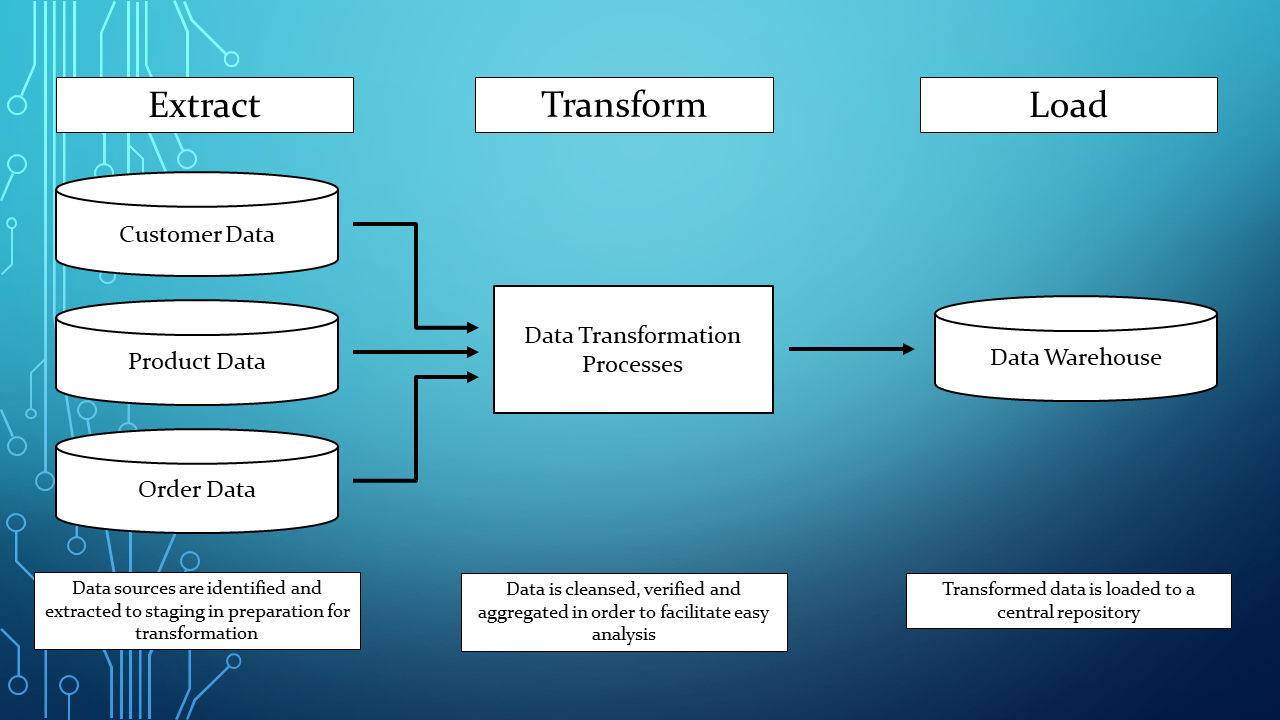Most businesses have daily repetitive tasks that are menial and often require low work skills. They take time and resources away from work that drives revenue.
Why Automate?
What Should I Automate?
Case Study
Each workday, Melissa pulls data from 3 different sources to create a daily “order completion” report for her client. The client uses this report to close outstanding orders in their internal system.
Melissa spends 1.5 - 2 hours each day gathering data, compiling, reviewing and sending the report. Melissa makes errors from time-to-time because she manually enters data from different sources. This creates additional work to correct the issue and causes client dissatisfaction.
How much would Business Process Automation save Melissa’s company if she could have this productivity time back in her day and fewer mistakes to re-work?
ETL is a type of data integration that refers to 3 steps (extract, transform, load) that are used to blend data from multiple sources. It's often used to build a data warehouse. During this process, data is extracted from a source system, transformed into a format that can be analyzed, and loaded into a data warehouse or other system.(Source: SAS)
Why ETL?

Don’t waste time scouring the web for data you need to optimize your business. Web scraping automates this process and allows you to retrieve the data from a central repository or data warehouse. The data retrieved from the web could be customer or competitor research, key search terms, or mapping pricing trends. Any data that gives your business a competitive advantage; as long as it is online can be scraped for your use.
Why Scrape?